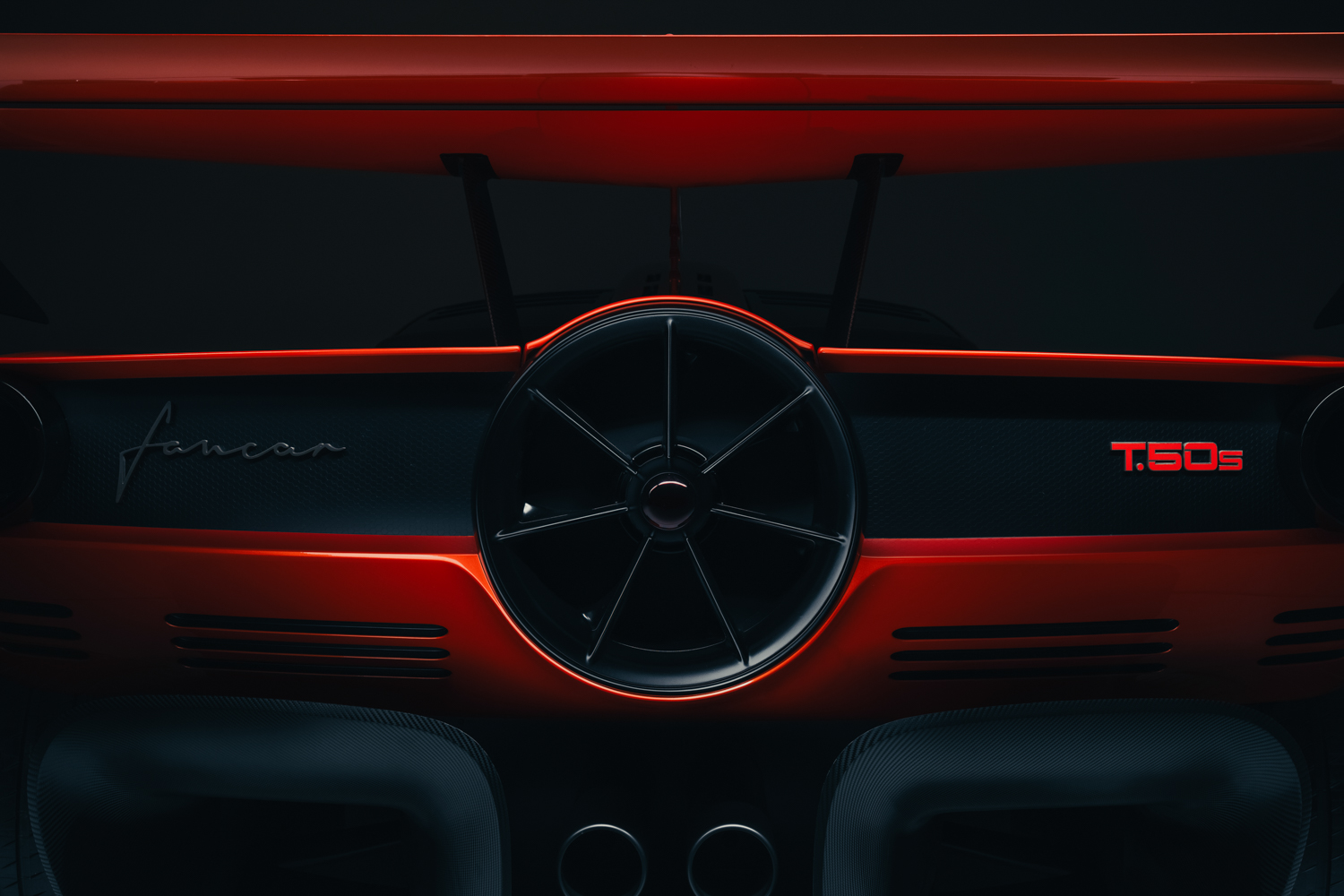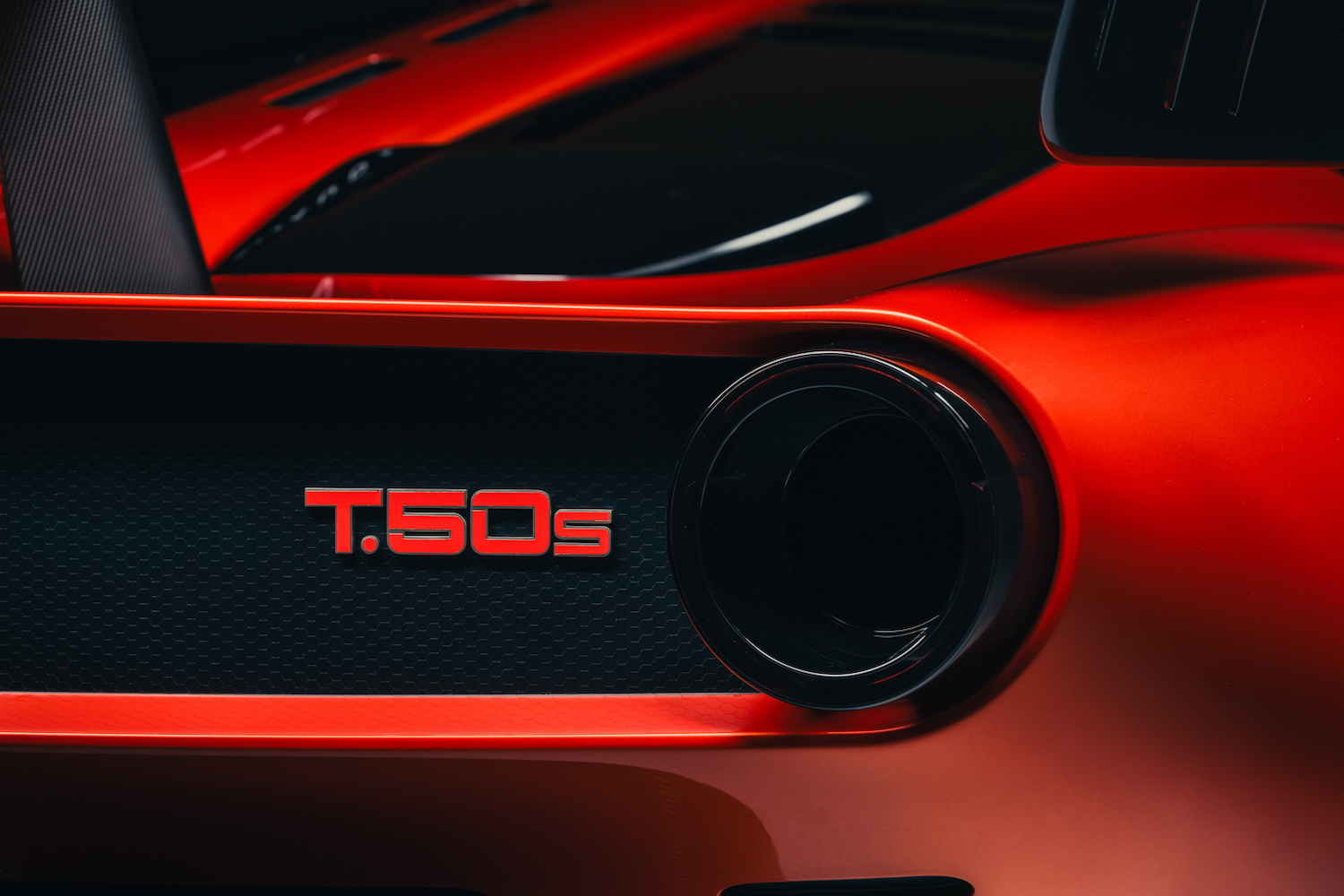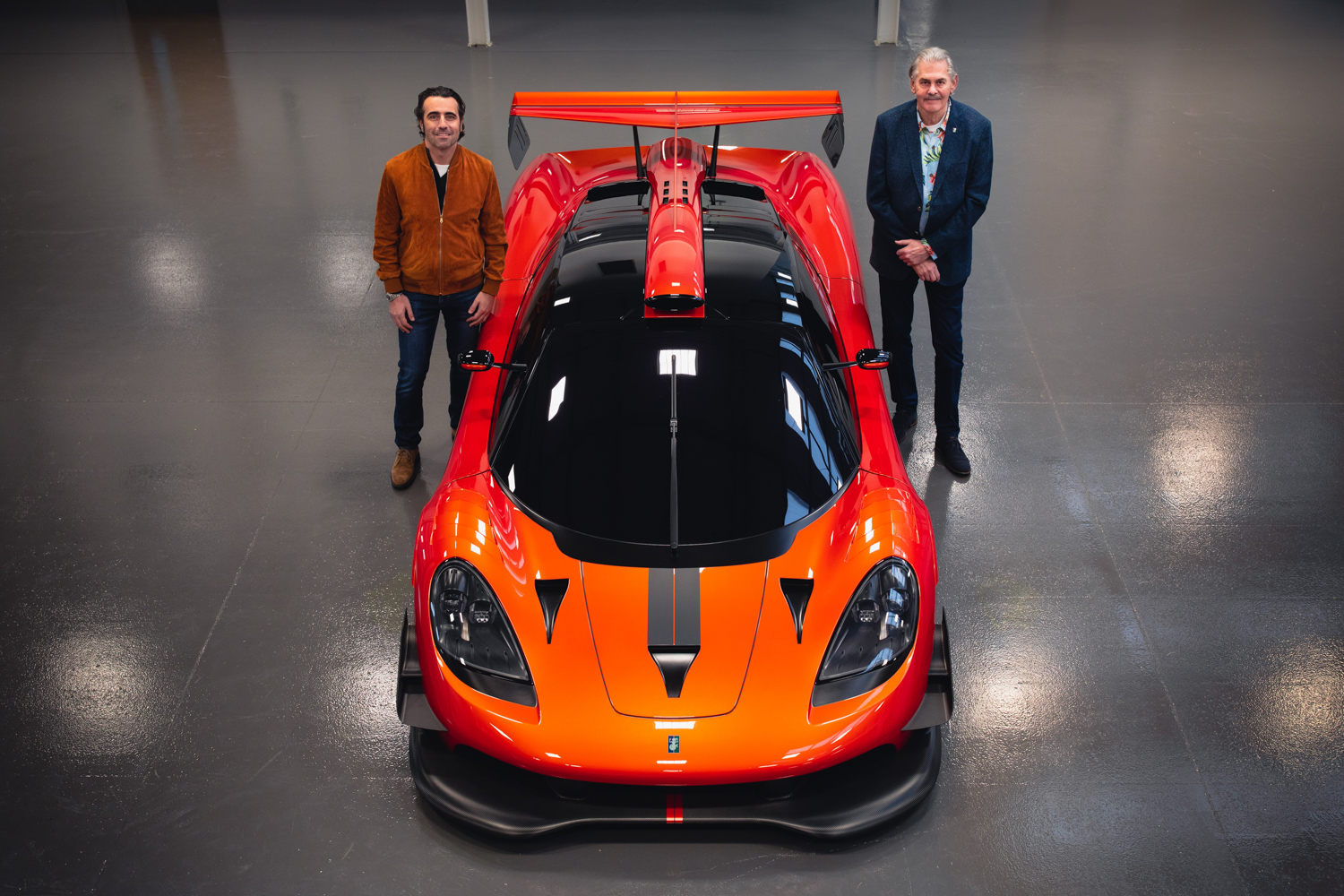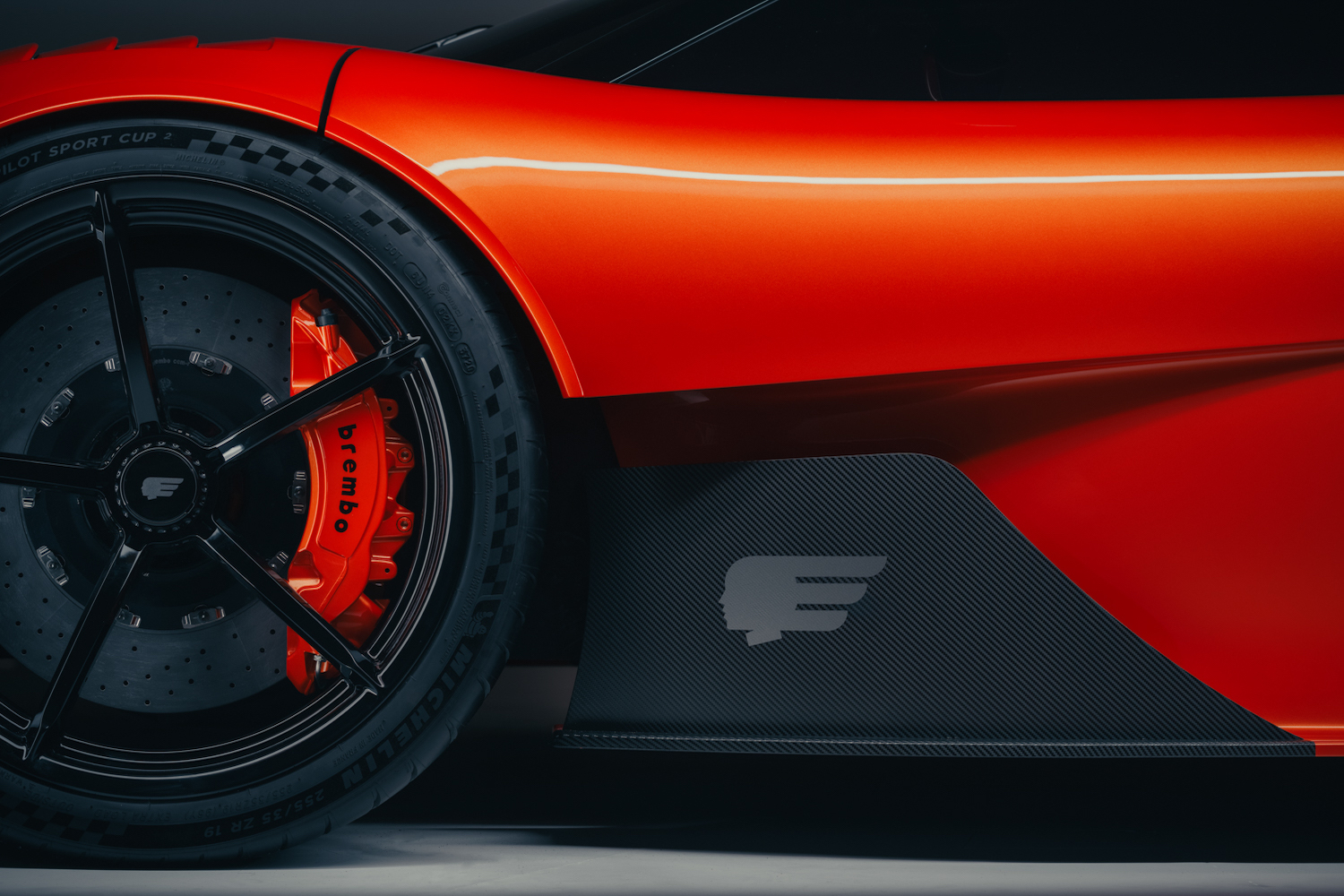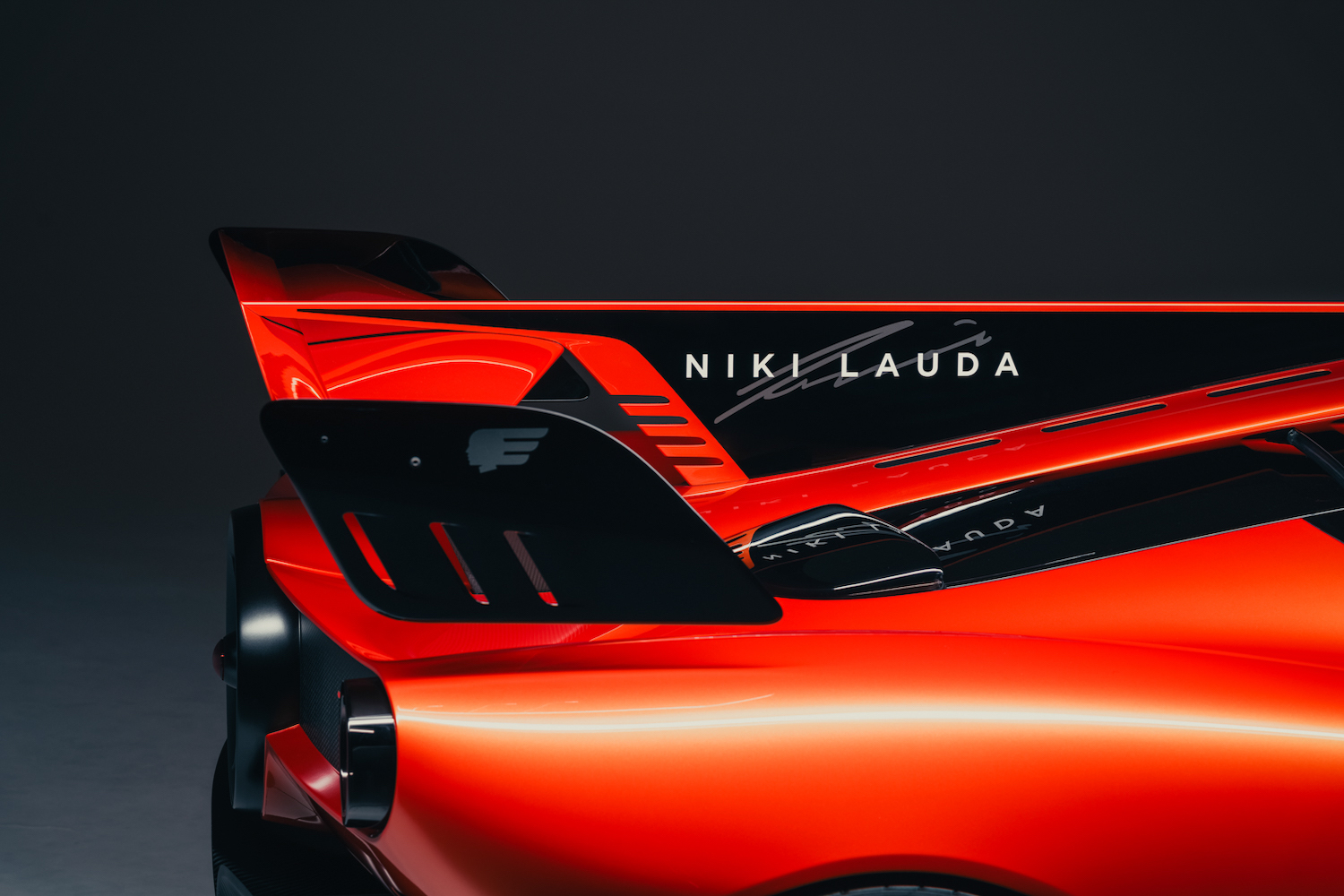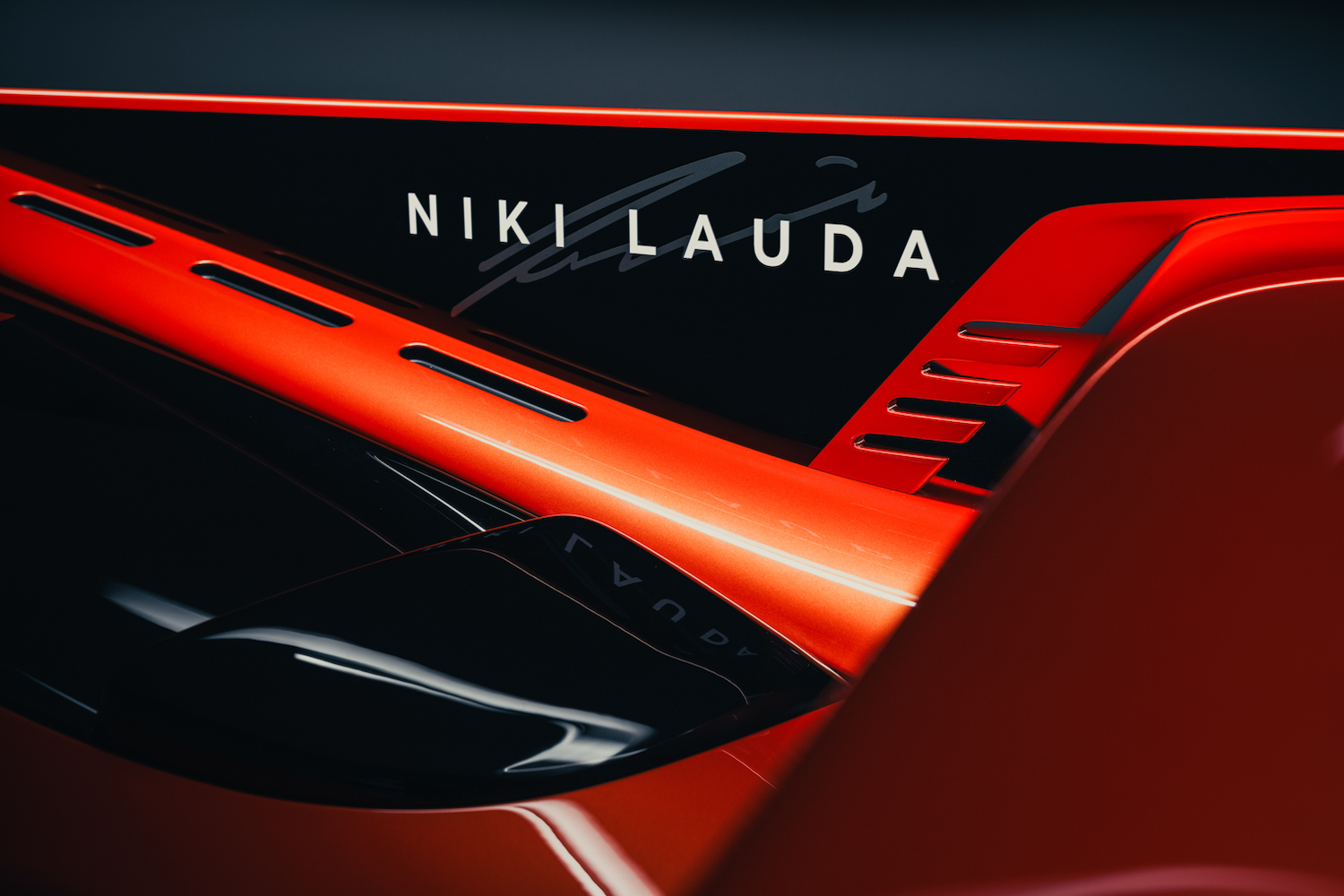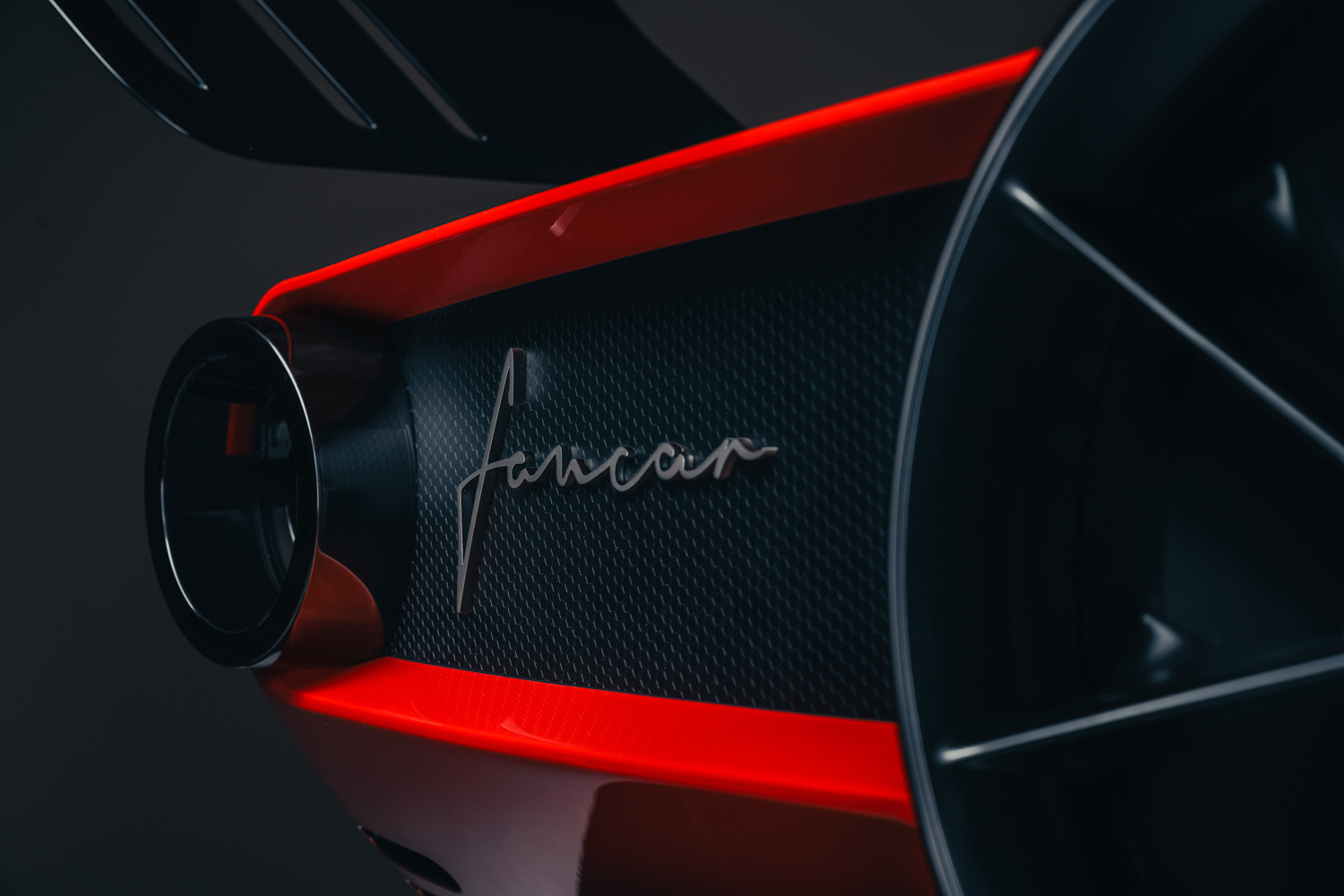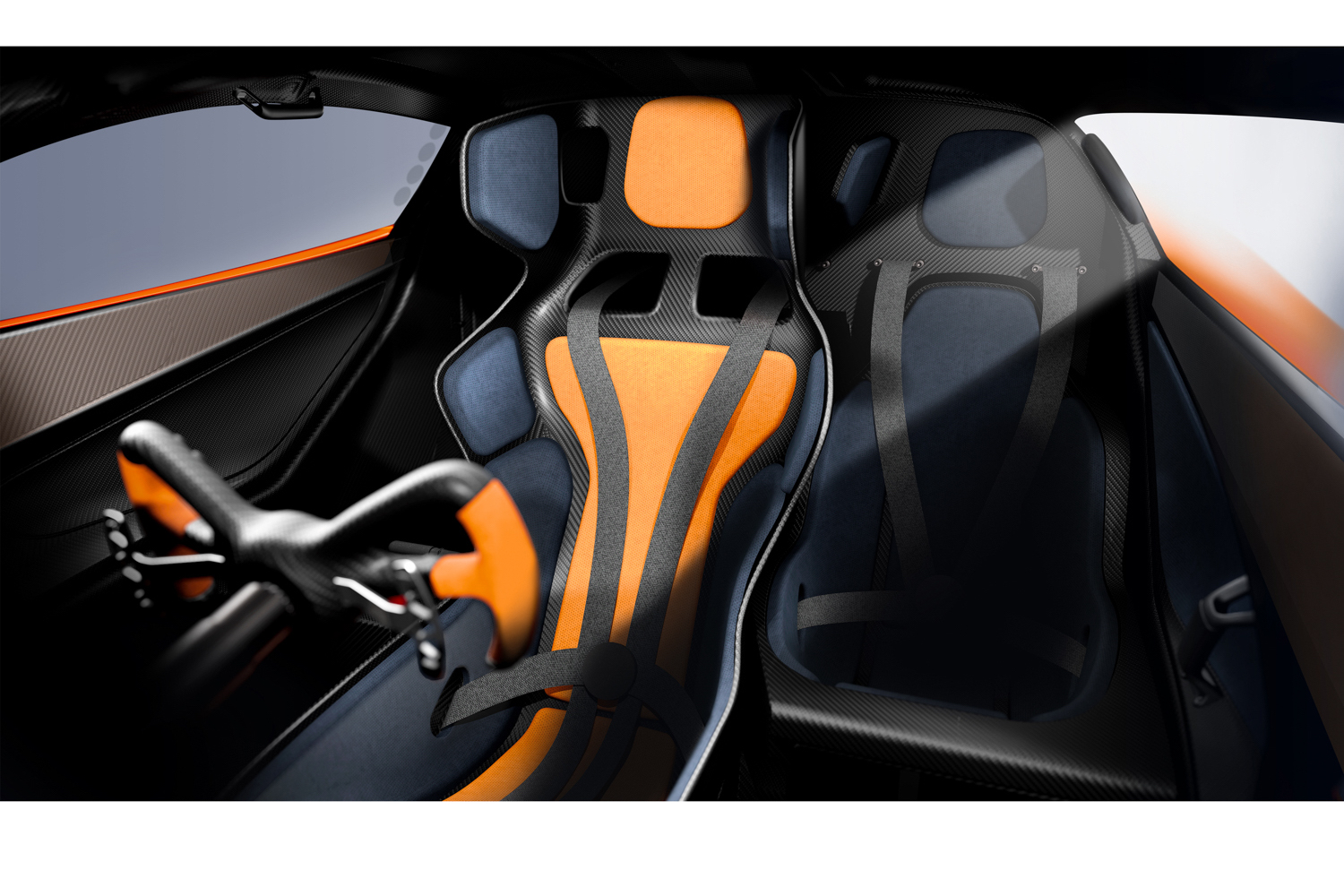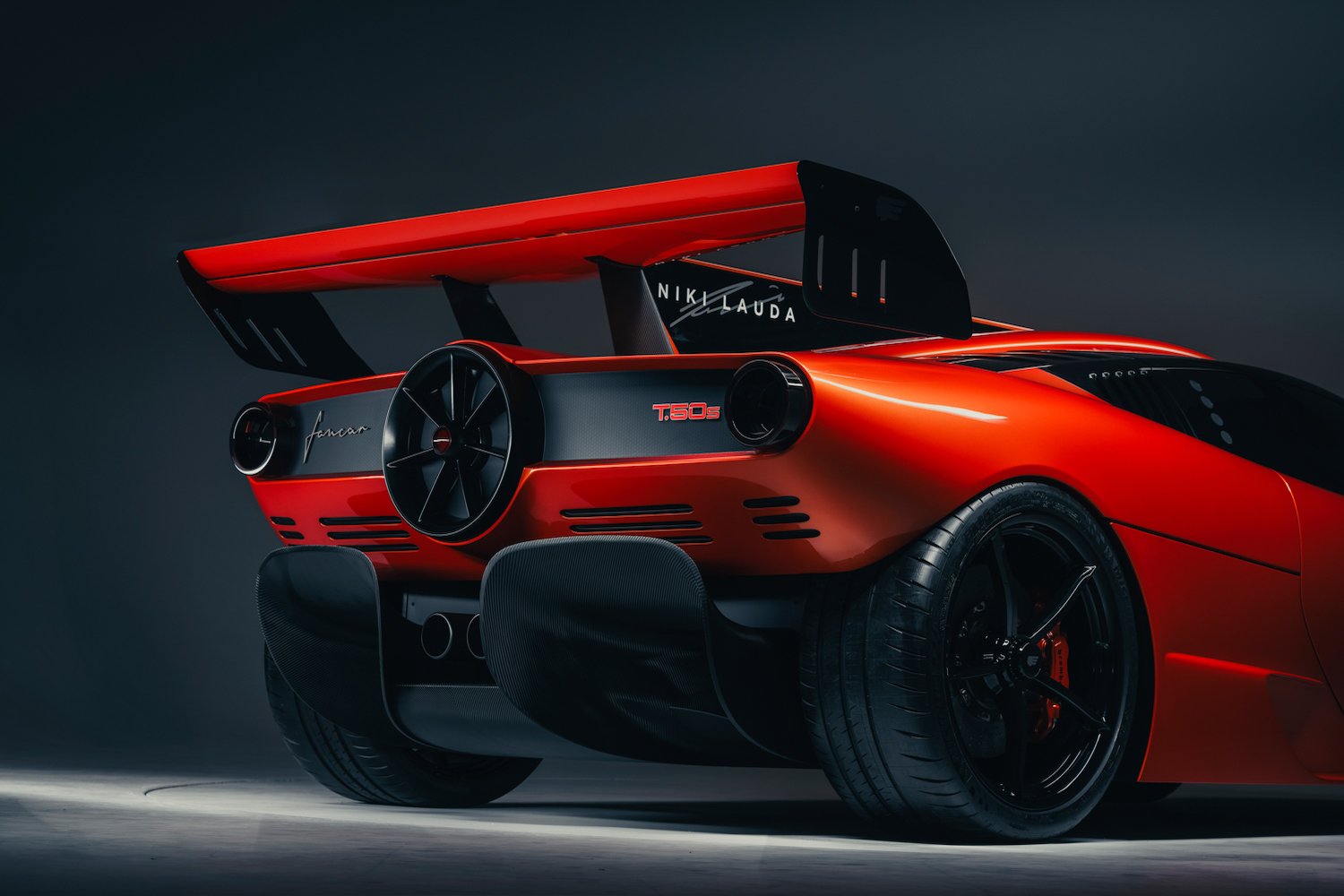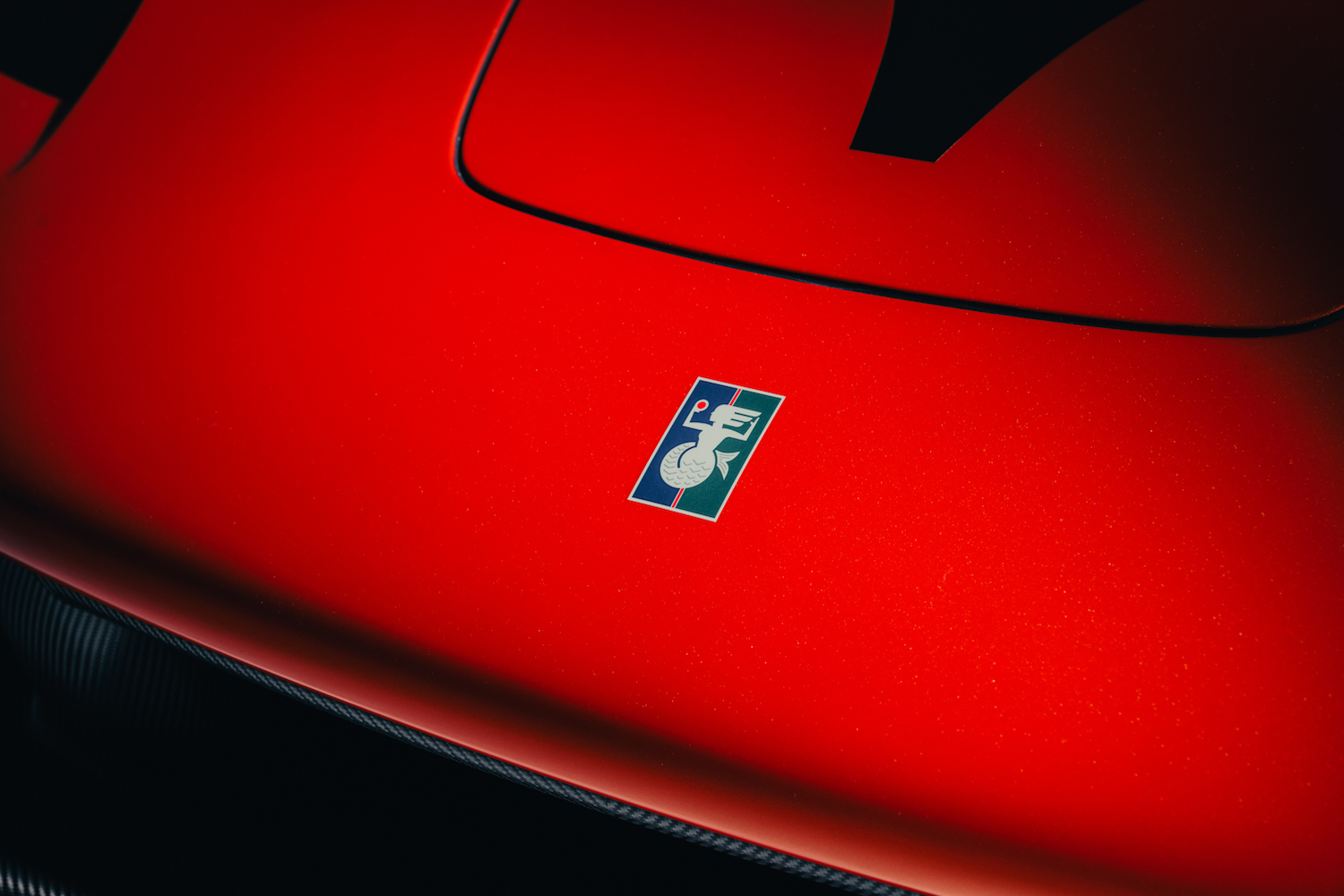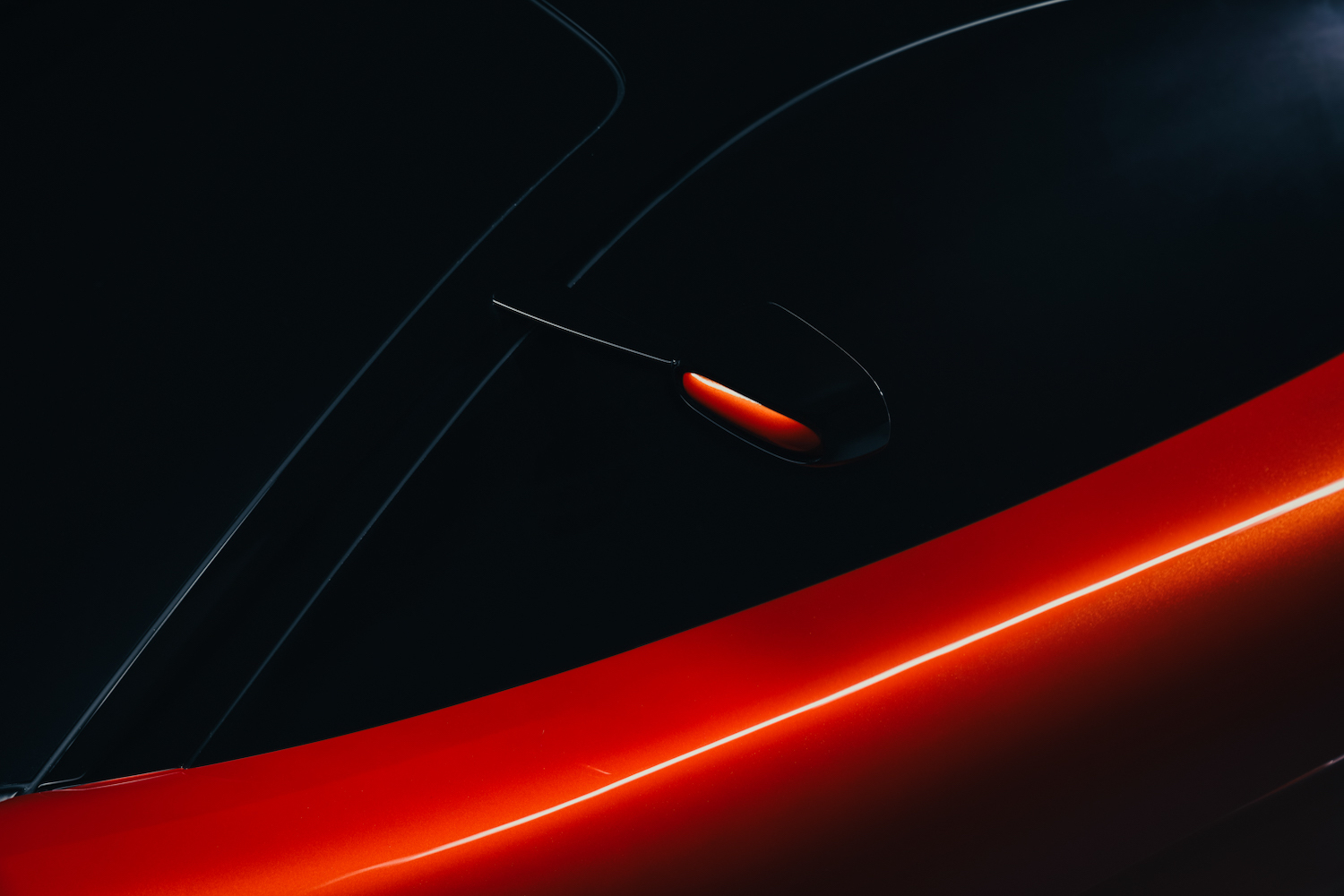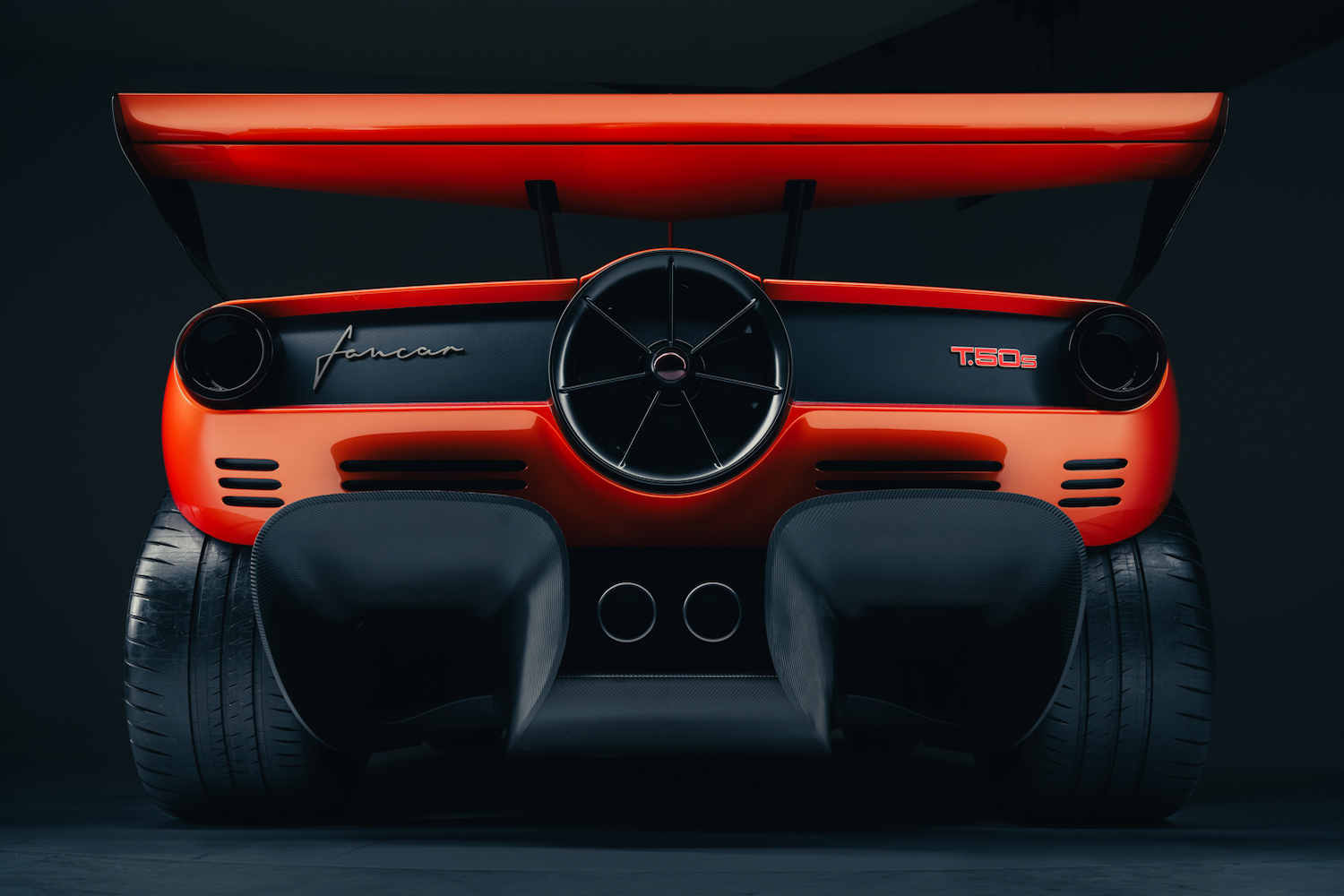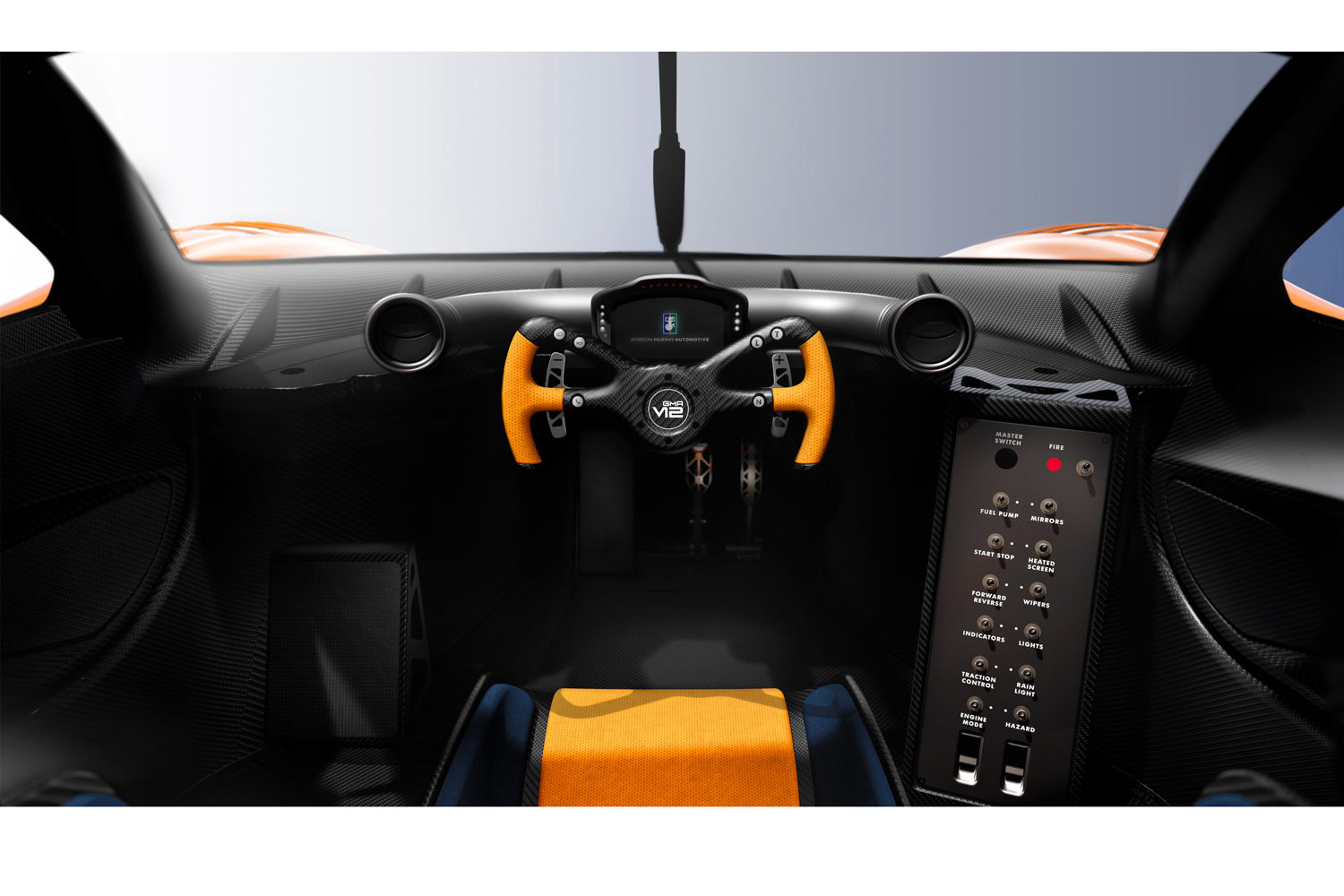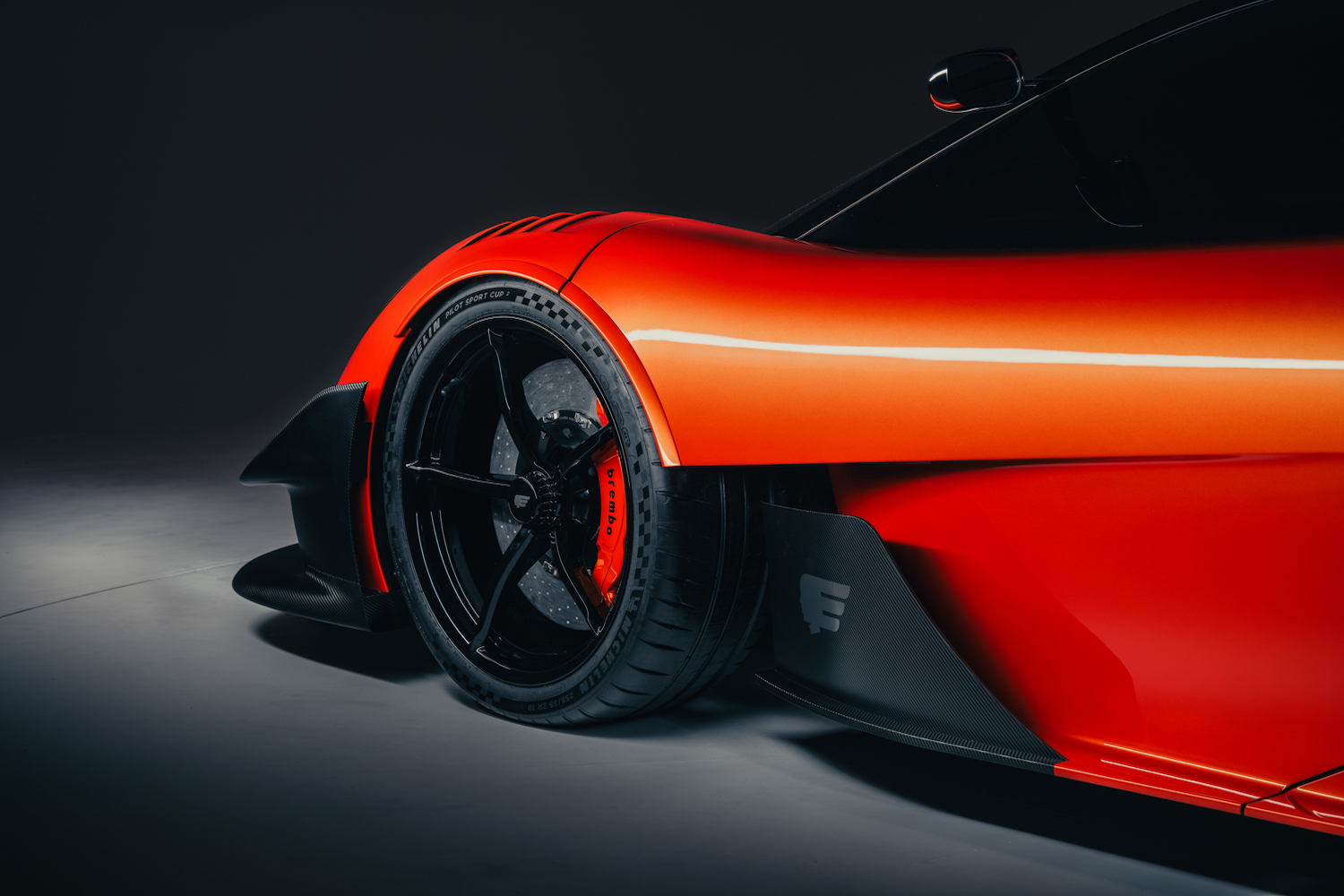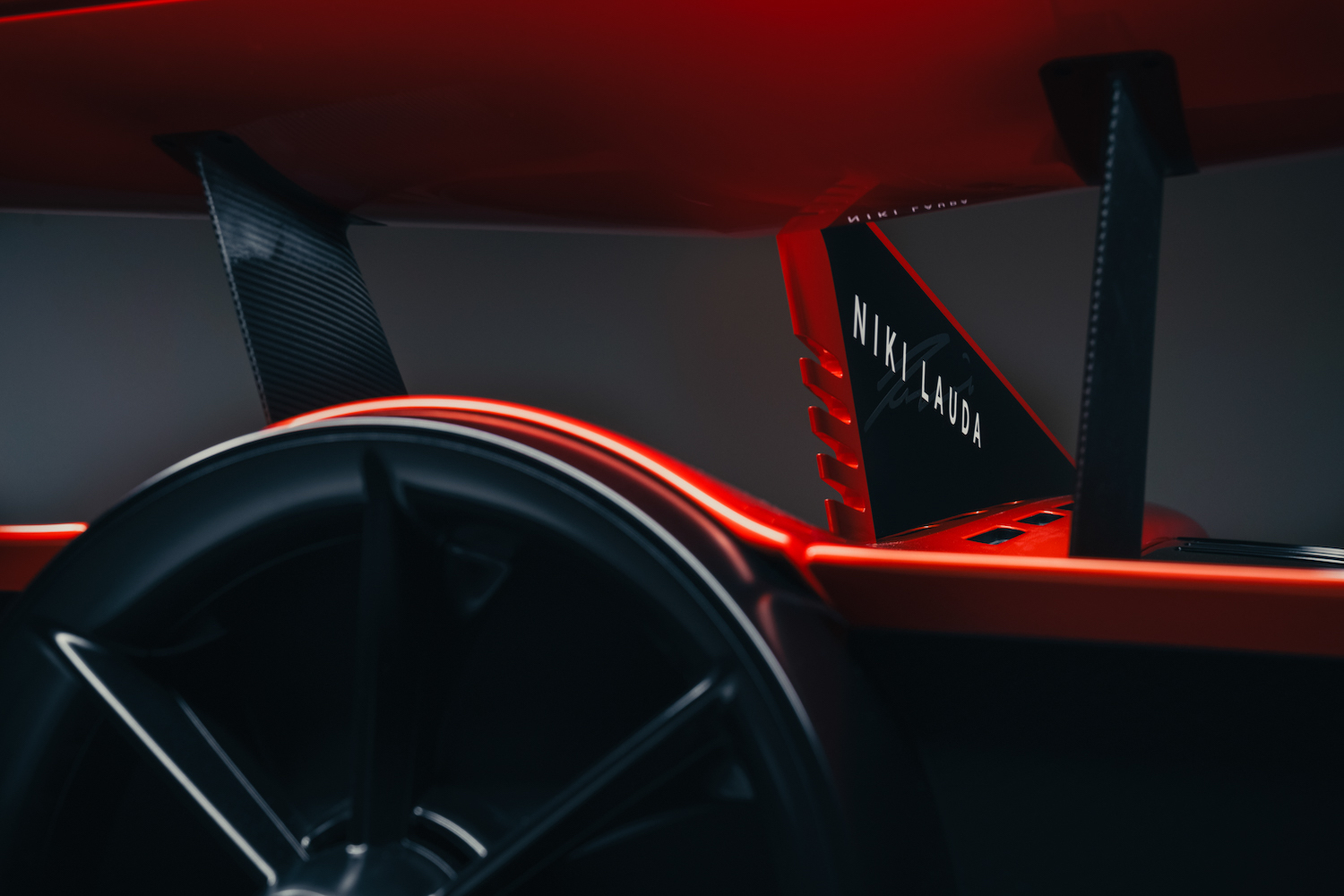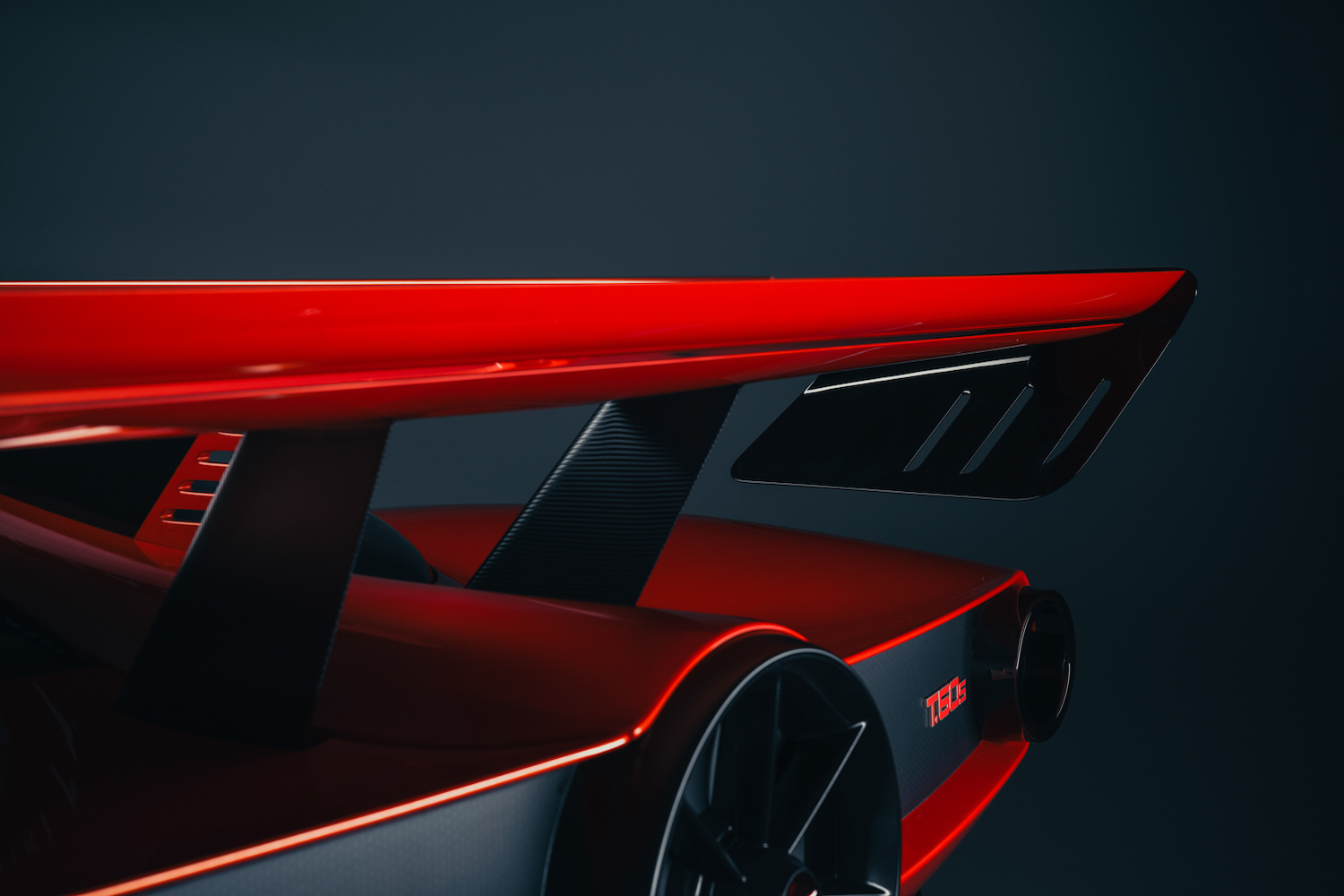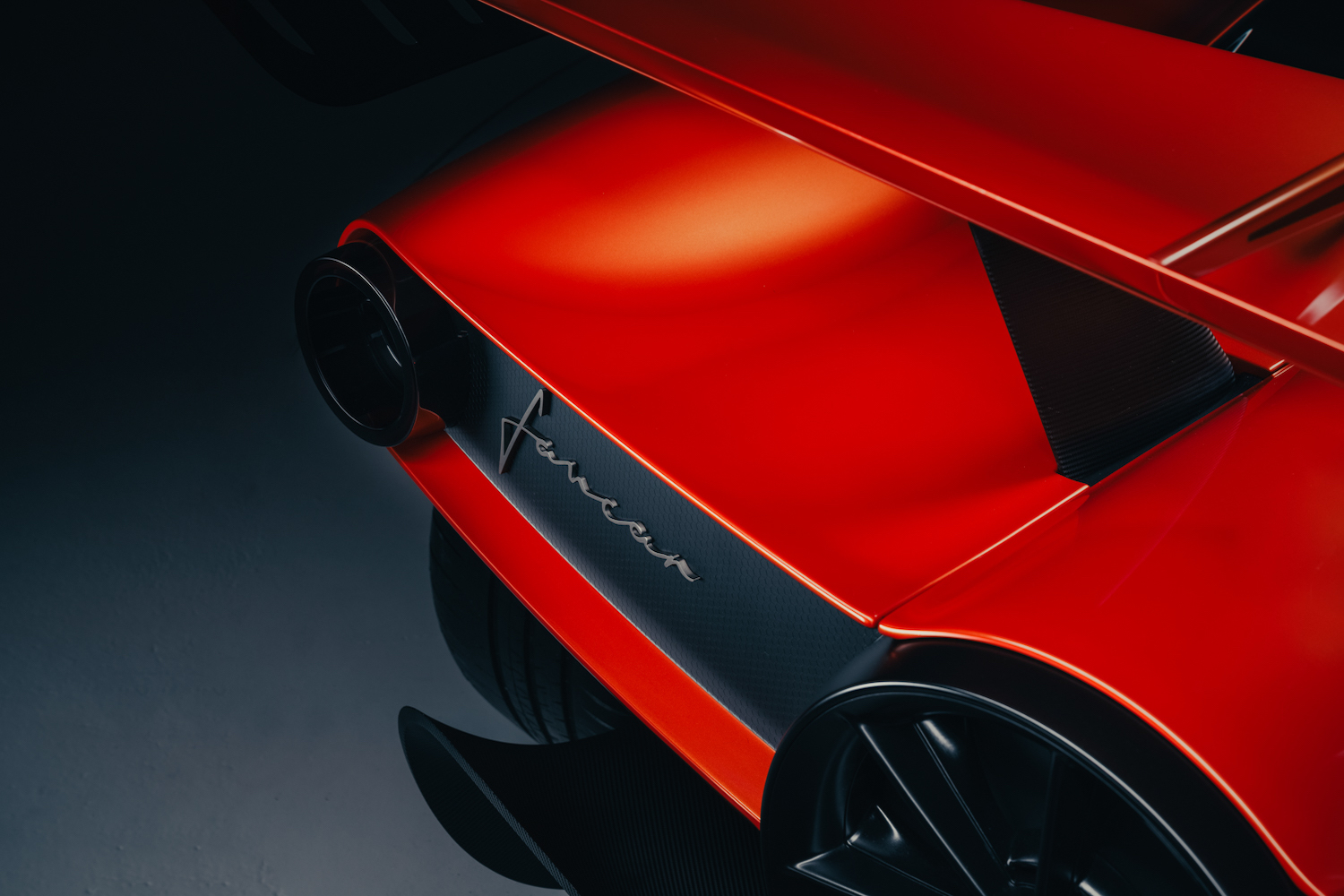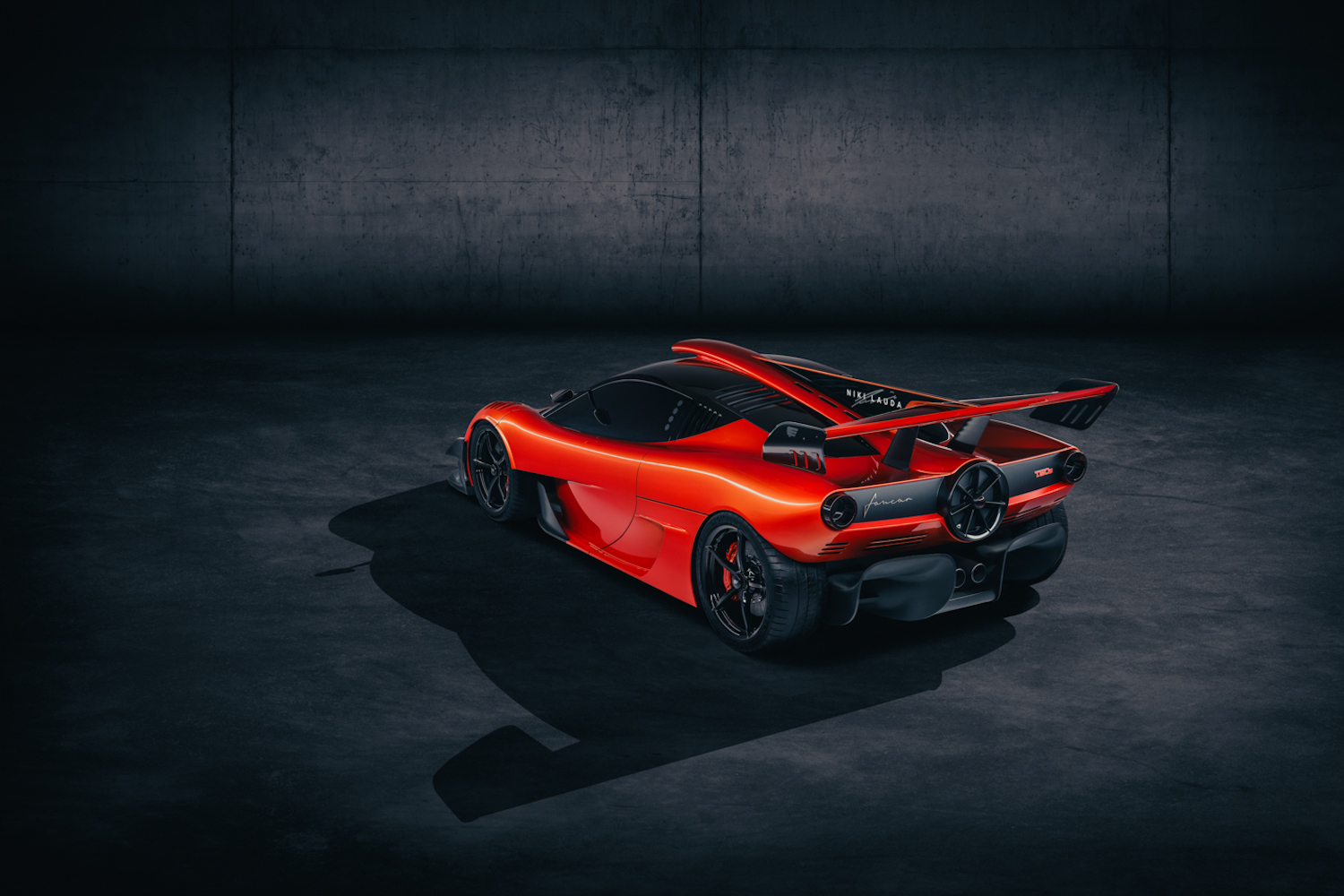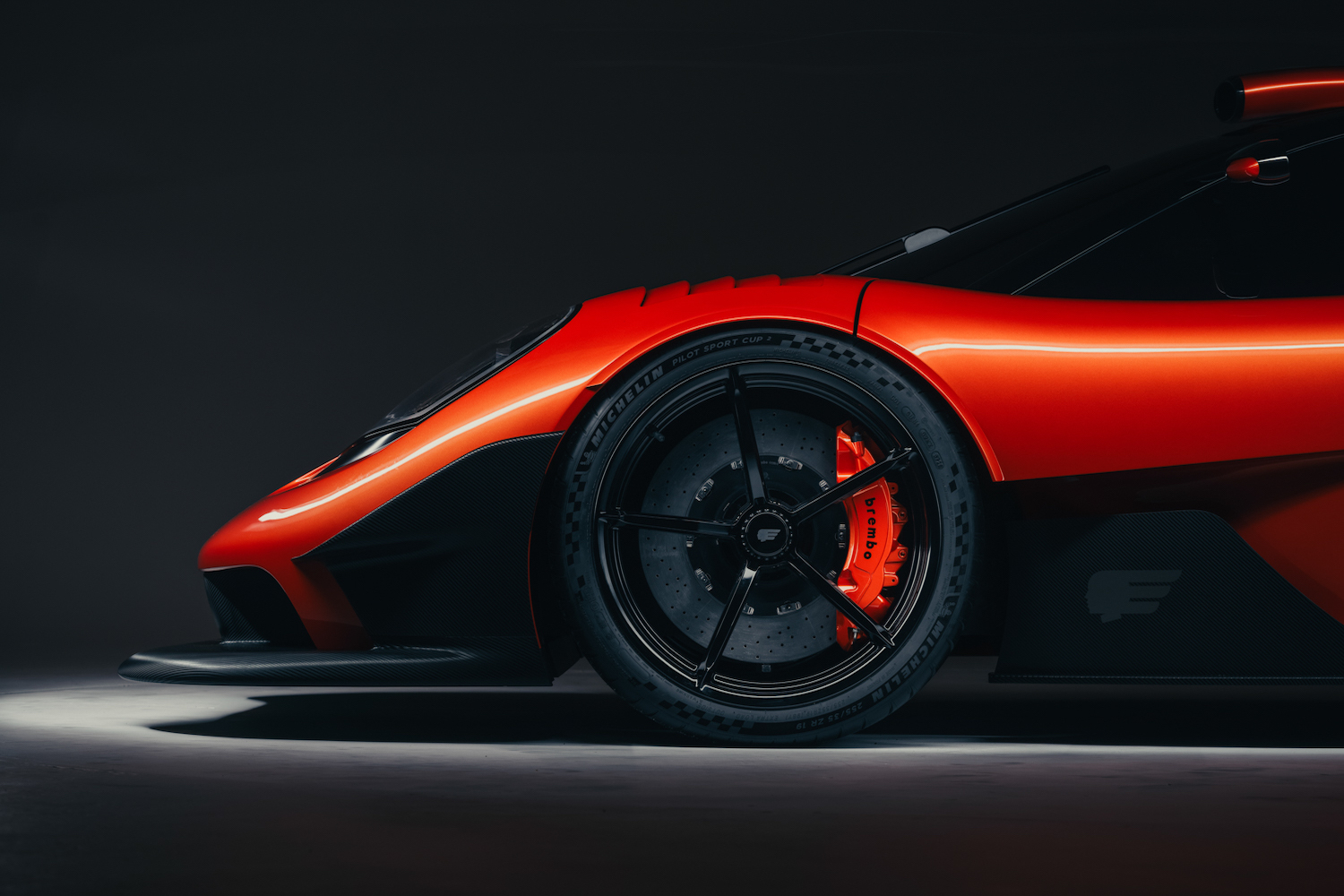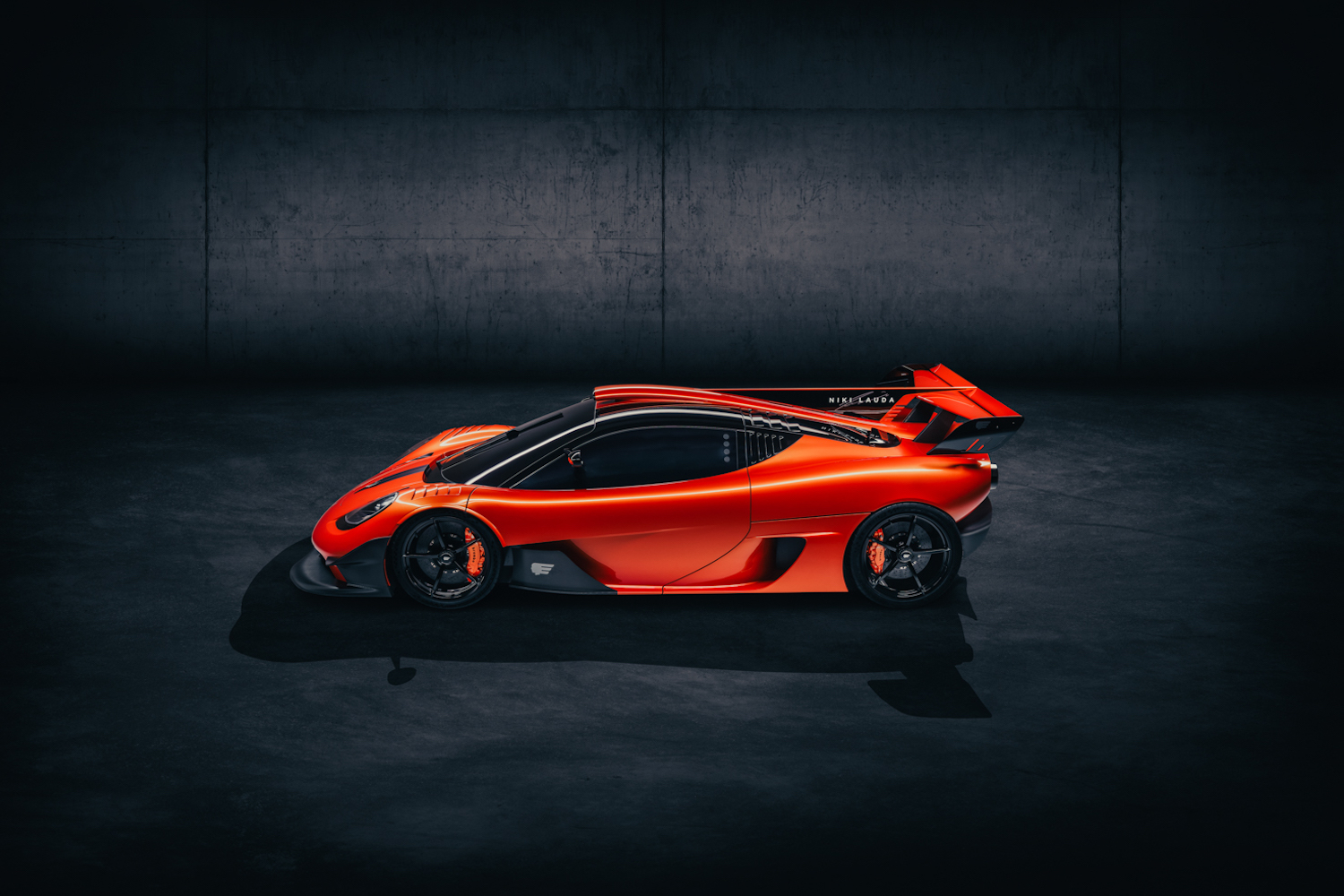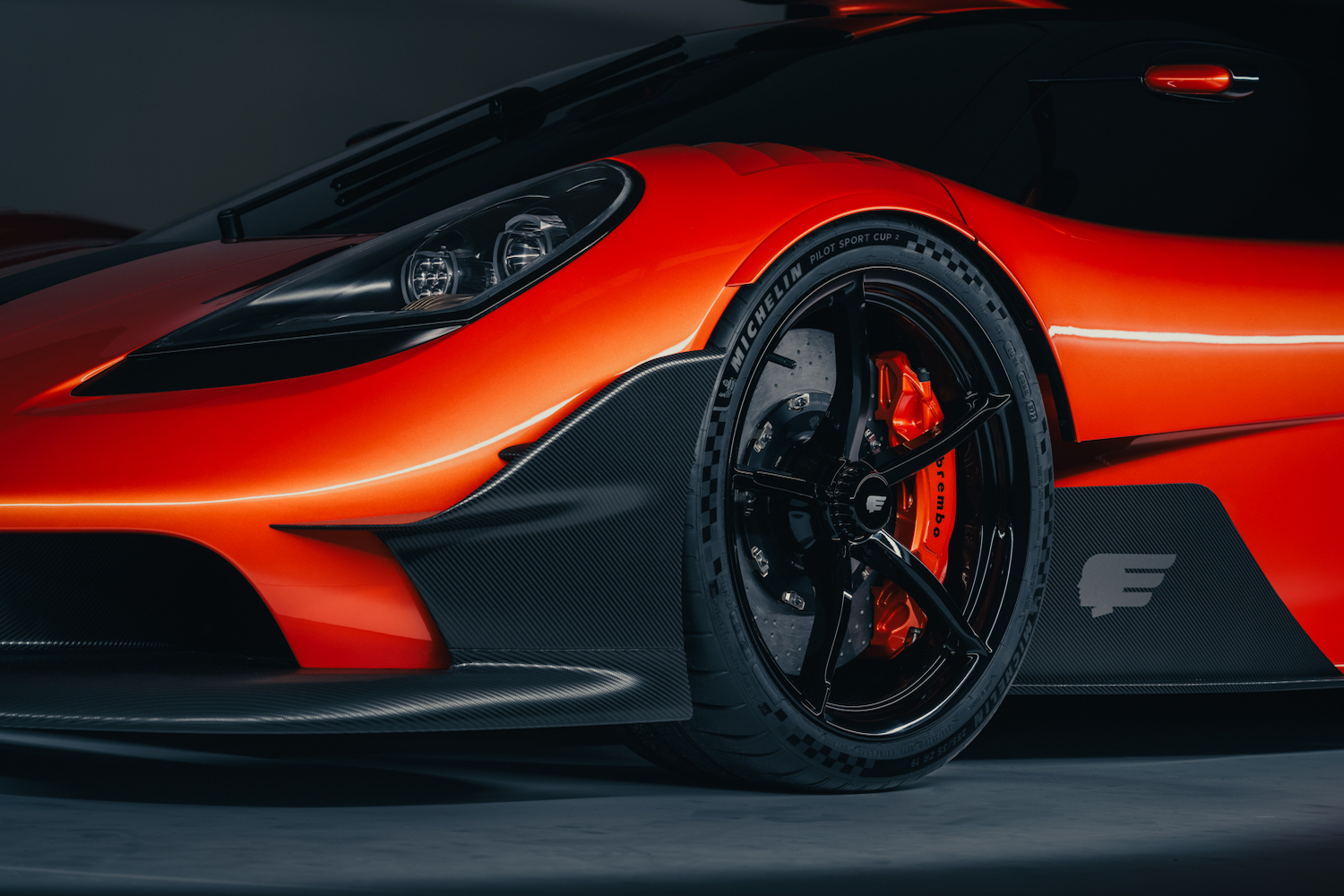If you think the astonishing Gordon Murray Automotive (GMA) T.50 is a tad too road-biased for your tastes, then a) you're a bit weird, and b) salvation is at hand. Say hello to the GMA T.50s Niki Lauda, which is the track-focused hypercar of the pair and which was developed alongside the, ahem, 'regular' T.50.
Immense downforce
Somehow, and don't ask us how (all right, do; we'll come onto it later, at any rate), GMA has managed to slice another 134kg out of the already-featherweight T.50, meaning the T.50s Niki Lauda tips the scales at just 852kg. Not only that, but the Lauda is powered by a 'substantially redesigned version' of the T.50's Cosworth-engineered 3.9-litre V12, raising peak power from 663- to 711hp (or, for a limited time, 735hp). It still redlines at a monstrous 12,100rpm, by the way, so that's all good. Beyond this, the T.50s NL gains a newly designed six-speed paddle-shift gearbox, as well as the advanced aerodynamics complete with the 400mm rear-mounted fan that can generate up to 1,500kg of downforce. Yes, that's one-point-five tonnes of downforce. Which the company had to dial back from the original 1,900kg, to make the car more driveable for mere mortals. Ye gods!
So, to drill down into the details, on the outside you might be surprised to know that there's not a single body panel on the T.50s which is carried over from the T.50, despite the fact they obviously look similar. The key difference is the central fin that goes from the roof to the rear spoiler, an item designed to enhance stability and also a surface that features the 'Niki Lauda' logo. The 400mm fan, as discussed, is the same item as seen on the T.50, but the rear diffuser is significantly larger on the T.50s and it features a delta-wing spoiler. Badging on the back of the GMA reads 'T.50s' and also 'Fan Car', which is nice. Up front, barge boards are sculpted to improve airflow to the side ducts, which is where the oil-cooling systems for the engine and transmission reside. A large splitter and dive plans are also included, and owners will be able to individualise their T.50s Niki Lauda through a choice of colours and liveries, ensuring no two cars will be alike (we'll explain later just how many examples will be made).
No distractions inside
Dihedral doors open in their typically dramatic fashion to reveal a cabin which is pared back to the bone. The Niki Lauda has the same central, forward-mounted driving position and features a full racing carbon-fibre seat with a six-point harness. There is actually a fixed passenger seat to the left of this, complete with a four-point harness, but the T.50's right-hand passenger seat has been replaced with a fire extinguisher system. This allows for the mounting of a vertical switchgear panel that is highly reminiscent of the same item in the McLaren F1 GTR. And if you have no interest in taking a passenger along for the ride of their lives, then the T.50s can be specified without the left-hand seat for even further reduced bulk.
Then there's the steering wheel. Or should we say 'steering rectangle'? This features on the key controls the driver needs, including traction and launch control, as well as a car-to-pit/driver-to-passenger radio system and a button to select neutral in the 'box. Professor Gordon Murray CBE said of this dedicated focus to minimalism: "I used to make my drivers take their watches off, partly for weight, but also because it adds to the steering inertia. Big wheels with lots of switches are quite heavy from a steering inertia point of view, so for the T.50s I wanted to keep the wheel small, clean and simple."
Beyond this, the T.50s features a single digital screen, which displays essential information about the car to the driver and which also has a camera video feed, while comfort was a key part of the equation here - Prof Murray says the F1 GTR won at Le Mans because its drivers were (relatively) relaxed behind the wheel, so he is aiming for the same thing from the T.50s Niki Lauda.
Some mighty, mighty numbers
The uplift in power in the 3.9-litre, normally aspirated V12 engine means the T.50s Niki Lauda develops 178hp-per-litre, which is more than the highly successful Cosworth DFV F1 engine made in its pomp. Furthermore, the GMA's power-to-weight ratio of 835hp-per-tonne betters than of a nat-asp LMP1 car, which is just... mind-boggling, really.
The motor is fed by a newly designed, roof-mounted, high-performance RAM induction airbox, which can momentarily lift peak power from the usual 711hp at 11,500rpm to 735hp. Torque has also increased from the T.50, a maximum of 485Nm at 9,000rpm eclipsing the road-going model's 467Nm output. The straight-through exhaust with no cats and small silencers is said to take the engine sound to 'a new level', while the V12 itself has revised cylinder heads and camshafts, plus a raised compression ratio of 15:1. The engine braking promises to be savage, then.
The whole powerplant weighs 162kg, which is 16kg less than the 663hp iteration in the T.50 - itself previously the lightest road-going V12 ever made. Much of the mass has been extracted by the use of things like titanium valves, as well as the deletion of variable valve timing. The induction system is simpler but no less alluring as a result, as 12 throttle bodies sit on top of the 3.9-litre unit and are fed directly by the motorsport-style airbox. Oh, and that six-speed gearbox? It's also 5kg lighter on the T.50s, thanks to the use of different gears, while the transmission and clutch are electronically actuated. It has been geared to deliver a top speed of around 322-338km/h, although a closer set of ratios optimised for short circuits will be offered - this'll top out at 274km/h.
No excessive kilos whatsoever
More weight-saving comes from the carbon-fibre monocoque chassis, wrapped around a honeycomb aluminium core. Every unique body panel on the T.50s is made from ultra-lightweight carbon, while the windows and screens in the Niki Lauda have thinner glass than the road-going T.50. All of the springs, dampers and the anti-roll bar have been respecified to suit the T.50s better on track, while the ride height is dropped a massive 87mm at the front and 116mm at the rear. The Niki Lauda has the same rack-and-pinion set-up as the T.50, albeit with a revised steering ratio, and the Brembo carbon-ceramic discs of the T.50 are carried over for the T.50s - that means 370x34mm front and 340x34mm rear discs, clamped by six-piston and four-pot callipers respectively. However, new ducting around each wheel improves brake cooling when on track, meaning the full 3.5g of deceleration that the T.50s Niki Lauda can summon up should be available to drivers at all times. Wheels are a set of forged magnesium 18-inch items, weighing less than 6kg each, all mounted on lightweight hubs and fitted with a centre-lock attachment; Michelin slick tyres measure 250mm wide at the front and 300mm wide at the back, with a wet-option rubber compound provided too.
So, finally, the name and the numbers. It's called the Niki Lauda because the Austrian three-time F1 World Champion drove one of Murray's most iconic vehicles in the series, as the professor himself explains: "The T.50s is named in honour of Niki to commemorate his famous win with the Brabham BT46B fan car in the 1978 Swedish Grand Prix. Niki was a great racing driver and he was also a good friend and it is absolutely fitting that we are launching the T.50s Niki Lauda on his birthday. Niki would have appreciated the innovation and engineering detail in our car."
Indeed, the Lauda family is said to be 'proud' that GMA has named the car after the late legend, who sadly passed away in 2019. But what a tribute from his good friend Gordon Murray - and there's more F1 links with the T.50s as well. Which relate to the build numbers: it will be four times rarer than the T.50, as only 25 examples of the Niki Lauda will be built at roughly €3.6 million a pop. Each car will be individually named after one of Prof Murray's Grand Prix wins on different circuits, so the first car will be designated 'Kyalami 1974' and then the following vehicles will be named after the 24 subsequent wins in chronological order. Each one will come with a specially commissioned book about the race that it is named after, with Murray's view and memories of the victory it took. There's even more of a bespoke and personalised service for T.50s Niki Lauda buyers than this, including the option to hopefully run this extraordinary car at special events organised with Stephane Ratel and the SRO organisation under the banner of 'GT1 sports club'.
Murray's final thoughts
Production begins in earnest in 2023, after all 100 T.50 road cars have been completed, and it's over to Prof Murray for the final words on this gobsmacking beast: "The T.50 is the ultimate road-going supercar, but I always dreamed of taking it one step further... to build a version that will deliver an on-track driving experience like no other car in history.
"When we created the McLaren F1 GTR, it was developed from the F1 road car. From its inception the T.50s Niki Lauda, though, was designed in parallel with the T.50. For the T.50 our target was clear, to make the best driver's car for the road. With the T.50s Niki Lauda it was equally clear, to make it the best driver's car for the track. Putting it another way, we asked ourselves what would be the coolest thing to drive on track and create a track driving experience like no other car in history?
"We had no interest in achieving the ultimate lap time or creating an over-tyred and over-downforced spaceship at the expense of driver involvement, because ultimately you have to possess an F1 driver level of skill and fitness to get the best out of them.
"Instead, I laid out some parameters to create the ultimate driver's car and experience on track: a central driving position, a V12 just behind your ear revving to over 12,000rpm, producing over 700 horsepower and with an even faster response time than the T.50, downforce limited to 1,500kg and a weight of under 900kg. Plus the ability to turn up at any track, make a few basic checks and have fun, without the need for an entire support crew.
"In my view, it doesn't get better than that and is driving in its purest form. The T.50s Niki Lauda will give a visceral connection between driver, car and track, the like of which has not been experienced to date. With the direction of travel of the automotive industry, it's hard to imagine that there will ever be another car quite like this. Especially not one with a central driving position, a high-revving naturally aspirated V12 engine and that is so lightweight. I believe it will go on to define its era."
You will not hear us arguing with you on that score, Professor Murray. Not. At. All.



